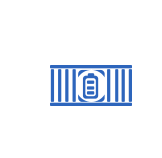Energy storage batteries and system testing methods have been continuously
improved. July 15, 2022 will be a safety milestone in the development of the
energy storage industry, watch the video to learn why.
New requirements are changing the approach you need to follow to test your
energy storage battery system. The revised UL 9540 standard includes updates for
large-scale fire testing. It will come into force on July 15, 2022. In the
future, the ESS test method may need to be changed.
Help your thermal runaway fire spread test be accepted by regulatory
bodies.
The massive growth in energy storage deployments over the past few years
has led to occasional field failures and increased awareness of the dangers of
thermal runaway. As energy storage enters our homes and workplaces, battery
manufacturers need to consider and assess the potential for fire spread.
We developed the UL 9540A Test method, the test method standard for
evaluating the spread of thermal uncontrolled fires in battery energy storage
systems, to help manufacturers establish a test method to demonstrate compliance
with the new regulations. Thanks to our extensive experience in the battery,
energy storage and fire protection industries, as well as a long history of
standards development practices, we worked with regulators to come up with
feasible testing methods after understanding industry pain points to accelerate
the adoption of this innovative technology.
As experts in global safety science companies and energy storage battery
certification testing, we serve the entire industry chain through our extensive
regulatory experience and regional laboratories.
We design services that help reduce the complexity associated with
manufacturing energy storage products. We support you in delivering safer and
better technology to the global market.
Explore the UL 9540A test method
The UL 9540A test method is cited in numerous standards and codes,
including UL 9540, the National Standard for Energy Storage systems in the
United States and Canada, the International Code of Practice (ICC) International
Fire Code (IFC), the National Fire Protection Association, the NFPA855 Standard
for Installation of Stationary energy Storage Systems, and local, state and
international building and fire codes.
UL 9540A was developed to address safety risks identified by U.S. building
codes and fire services. One of the main issues NFPA 855 (and the Fire Code)
seeks to address is the potential fire and explosion hazards associated with
battery systems, such as uninterruptible power supplies (UPS) or battery energy
storage systems (BESS). In order to control this danger, regulations set very
strict limits on battery system capacity and separation distance. For example,
the current ICC International Fire Code (2021 IFC) allows a single BESS unit to
be no more than 50 KWH, and a total maximum system capacity of 600 KWH per
indoor fire area (the space where the battery is located) or outdoor near
exposure. It also limits a single residential home system to no more than 20
KWH, with a maximum combined total capacity of 80 KWH. These BESS units must be
installed with a distance of 3 feet (1 meter) between the units and between the
units and any walls. The latest IFC and NFPA 855 versions allow for approval of
larger individual BESS units and separation distance limits of less than three
feet, based on the results of large-scale fire tests conducted with the UL 9540A
test method.
The UL 9540A test method addresses the following critical issues identified
by building codes and Fire services:
BESS installation instructions
Installation ventilation requirements
Effectiveness of fire protection (overall or external)
Fire strategy and tactics
We will work with you to understand your product and develop a personalized
test plan that is applicable to your company to meet your needs.
We are experts in battery safety technology
We are experts in battery safety technology. We helped develop the energy
storage battery standard ANSI/CAN UL 1973, the battery standard for stationary
and power auxiliary power applications; Energy storage system standard ANSI/CAN
UL 9540 for energy storage systems and equipment; And the latest UL 9540A test
method. We offer:
Complete large-scale fire test experiments covering all levels - no
subcontracting required.
With an experienced engineering and research team, we can use our knowledge
of electrochemistry and fire suppression to help customers better understand
their products.
Provide traceable test records for organizations and entities such as fire
departments and electrical and building inspectors.
 UL Automatic Control Cabinet
UL Automatic Control Cabinet
 UL Medium And High Voltage Switchgear
UL Medium And High Voltage Switchgear
 UL Low voltage switchgear
UL Low voltage switchgear
 UL distribution cabinet
UL508A Control Cabinet UL-UPS System UL Explosion-proof Cabinet UL High Voltage Frequency Converter Cabinet UL High Pressure Soft Start CabinetUL Medium Pressure Air Insulated Switchgear UL Medium Pressure Gas Insulated Switchgear UL Ultra-thin wind power switchgear UL Medium and high voltage motor control Center UL Railway power supply medium and high voltage switchgear
UL distribution cabinet
UL508A Control Cabinet UL-UPS System UL Explosion-proof Cabinet UL High Voltage Frequency Converter Cabinet UL High Pressure Soft Start CabinetUL Medium Pressure Air Insulated Switchgear UL Medium Pressure Gas Insulated Switchgear UL Ultra-thin wind power switchgear UL Medium and high voltage motor control Center UL Railway power supply medium and high voltage switchgear











